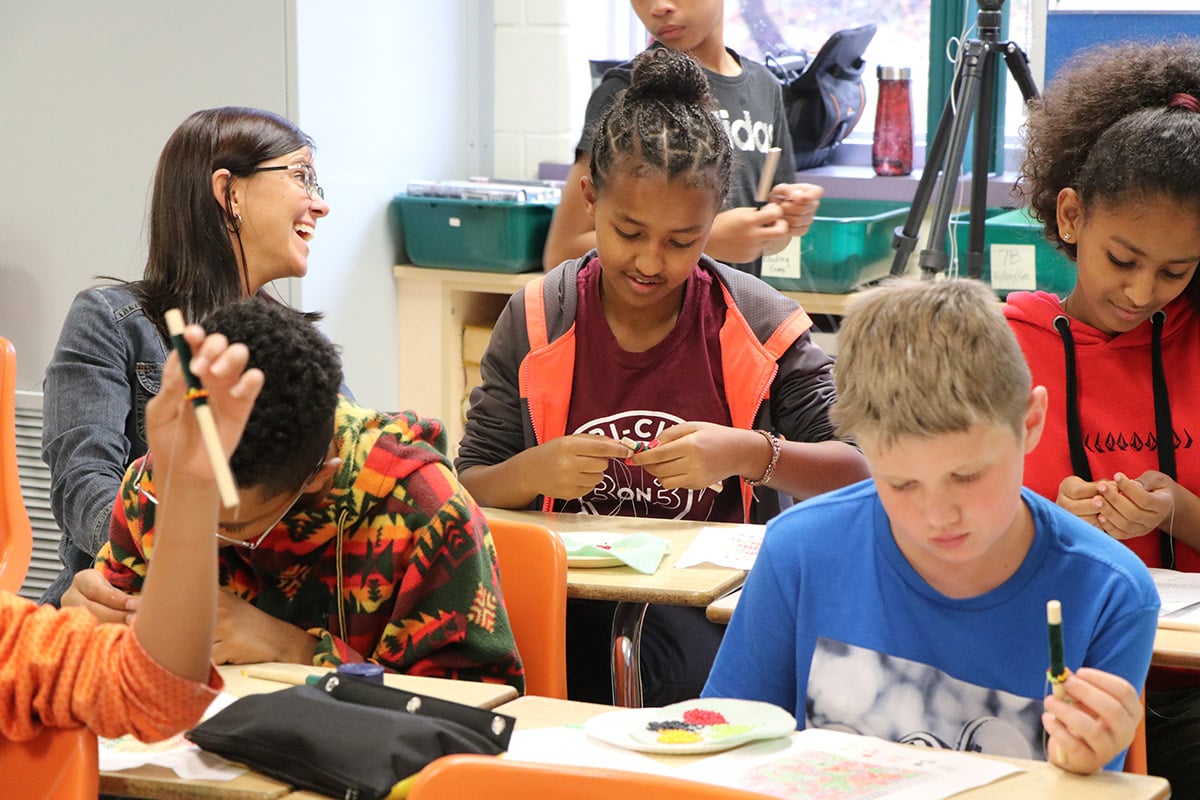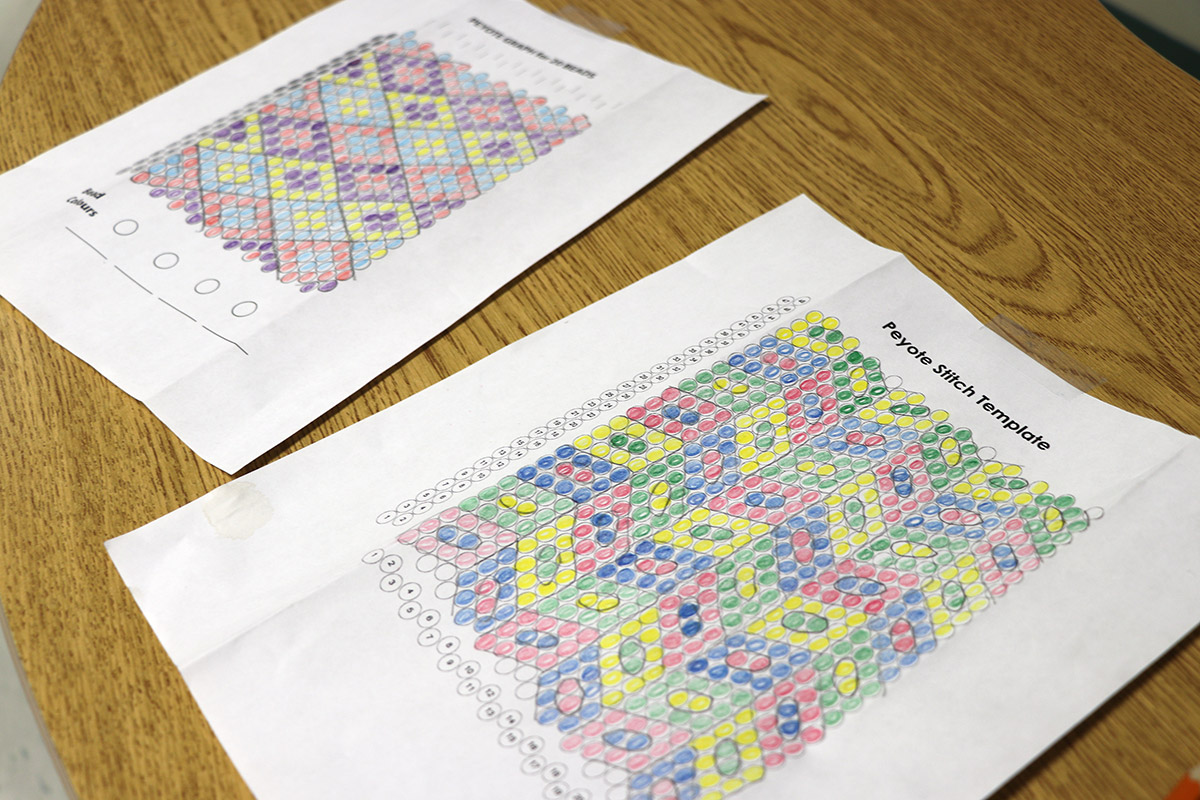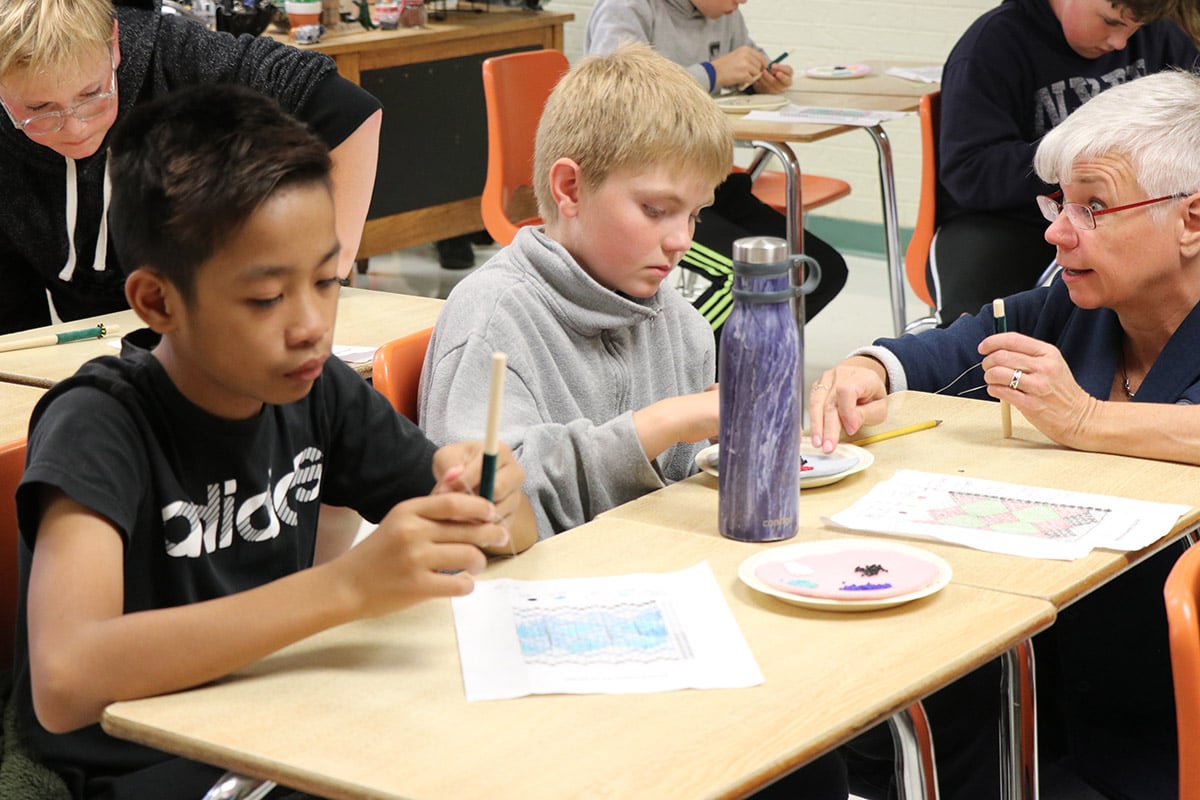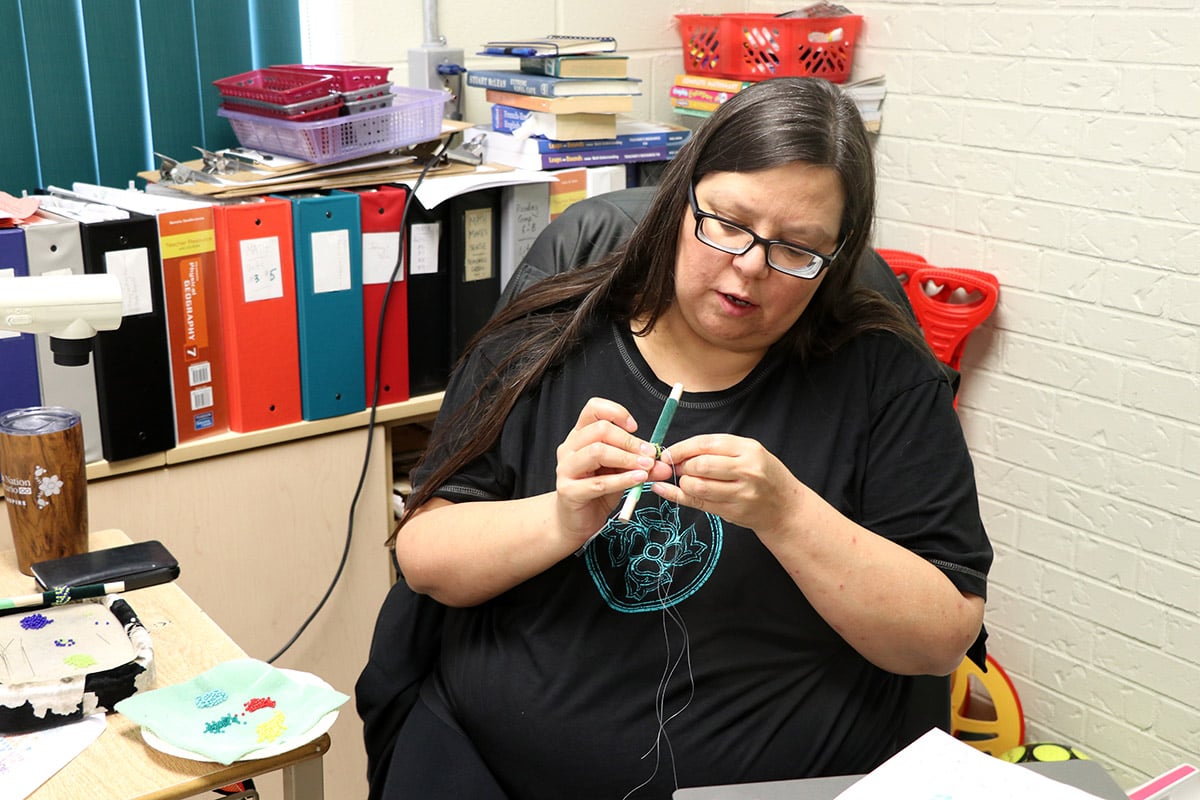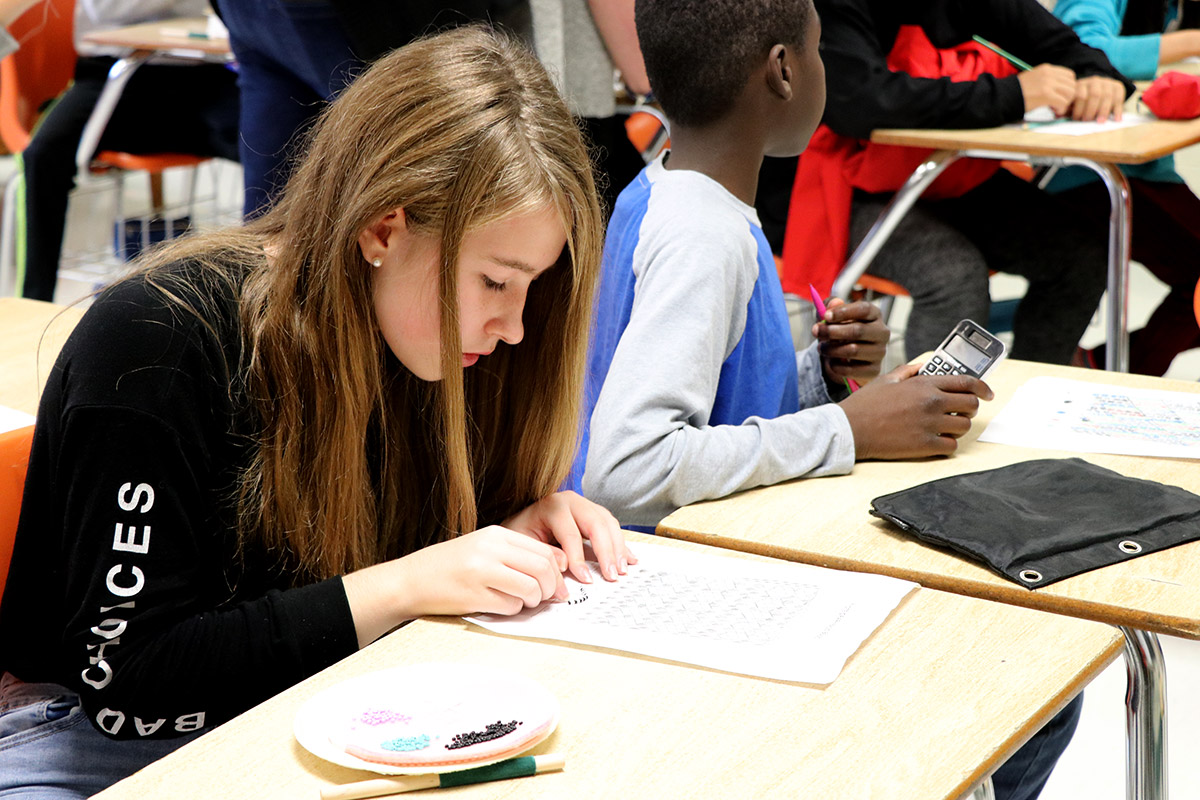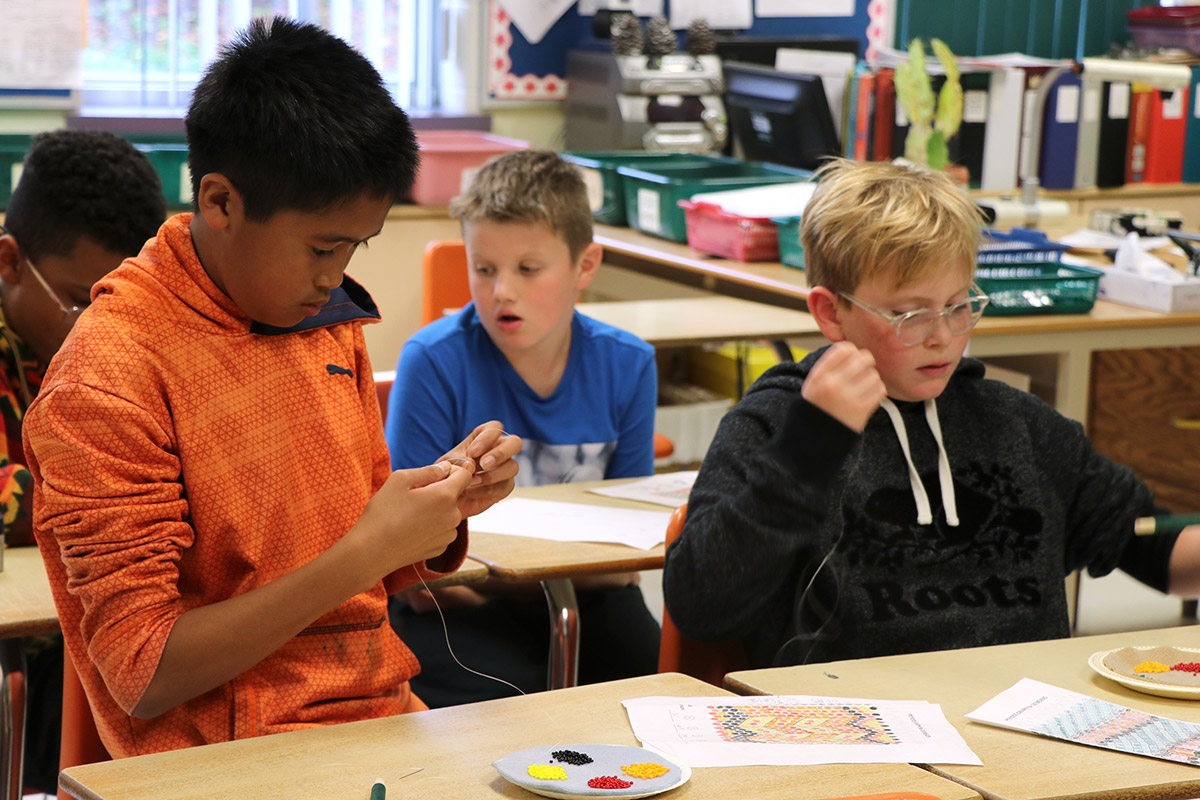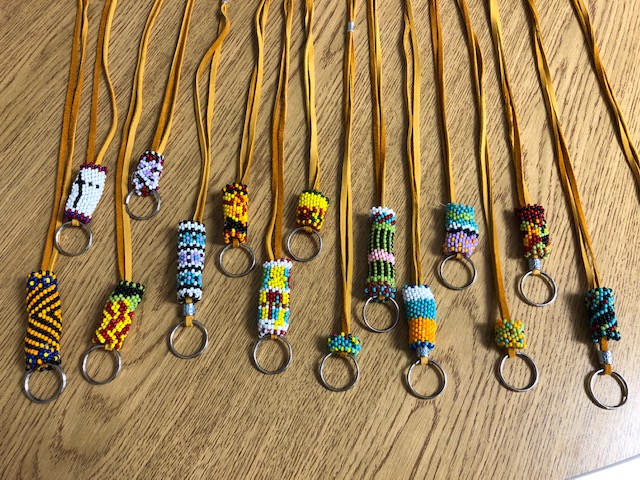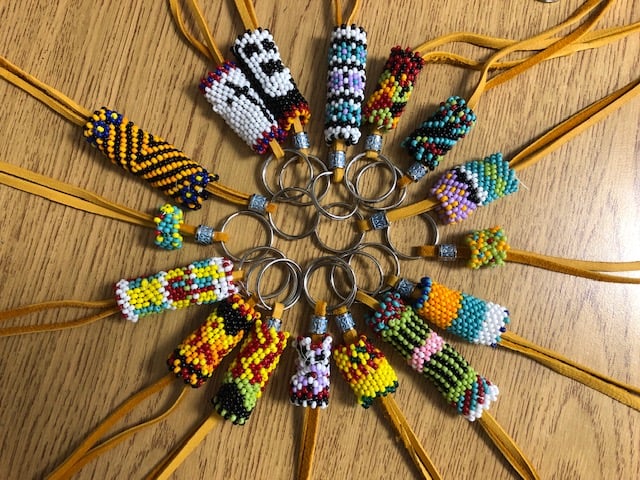Willow Road PS students find the math in Indigenous techniques of the peyote stitch
October 23, 2019
GUELPH, Ontario – For four days between October 15 and 21, Willow Road PS students in Mr. Brown’s Grade 7 class engaged in a collaborative project that combined Indigenous knowledge and mathematics, by learning about the peyote stitch and tessellations.
Students and staff were joined by Anishinaabe artist Naomi Smith and Lakehead University’s Dr. Ruth Beatty, whose work from First Nations Math Voices inspired the project.
Now in its third year in the UGDSB, schools partner with Indigenous community members who teach students about their history, culture, and art and design techniques. The students and staff then find the math in the artistic practice.
“It’s really teaching math through culture, as opposed to trying to impose culture on mathematics,” said Beatty.
“This is called problem solving,” laughed Smith while working one-on-one with students, helping them with their peyote stitch and troubleshooting as they got the hang of the technique.
In years past, UGDSB students have learned to find the mathematics in Indigenous techniques including loom beading, Métis finger weaving and medallion making.
On the first day of the program at Willow Road PS, Smith taught the students the techniques of the peyote stitch. The next day, they unpacked the mathematics, looking at tessellations and how they can use tessellations to create patterning in their beadwork.
“Students first had to choose a triangle, parallelogram or hexagon. Then they had to create their own tessellation based on which shape they picked and also based on the number count going across [their grid],” said Brown.
Students looked at how to divide the space on their peyote stitch template equally so that when they fold the flat template into a 3D cylindrical design, there will be a continuation of the tessellation pattern on the outside.
The program does so much more than find mathematics in artistry and design.
“One of the biggest impact these programs are having is on relationships,” said Willow Road Resource Teacher Bonnie Sears, who has been involved in the UGDSB program from the beginning.
“What we find at the end of the four days is that the students have really built relationships with our community members. Naomi is not only sharing her beadwork, she’s also talking about her cultural connections and the students are doing a lot of learning around that as well,” said Sears.
The UGDSB’s Lead for First Nation, Métis and Inuit Education, Colinda Clyne, is also a partner in the program and through her relationships in the community is able to find artists to teach their techniques and who are welcomed into the schools.
The program is also having a big impact outside of the Upper Grand. Through her work, Beatty has been working with school boards and First Nations across the province. The projects that take place in different schools are shared with other people interested in the project.
“Some of the math we found here [in the UGDSB], for example with the medallions, we then took to another school up in Kirkland Lake working with Matachewan First Nation. From there we were able to go further into the design and further into the math,” said Beatty.
Beatty said an exciting aspect of this year’s program in some school boards is the introduction of coding into the mix, where they will examine the connections between math and culture and coding.
“We know the connection between coding and math, and we know the one between math and culture, but we don’t know the coding and culture connections. And that I think will help us to further refine our thinking about different kinds of mathematical thinking inherent in this, that we can’t see just through how we’ve been looking at it so far. I think that will add another layer of learning for us,” said Beatty.
Watch the video below!
Categories: News Tags: Indigenous Education • Numeracy

